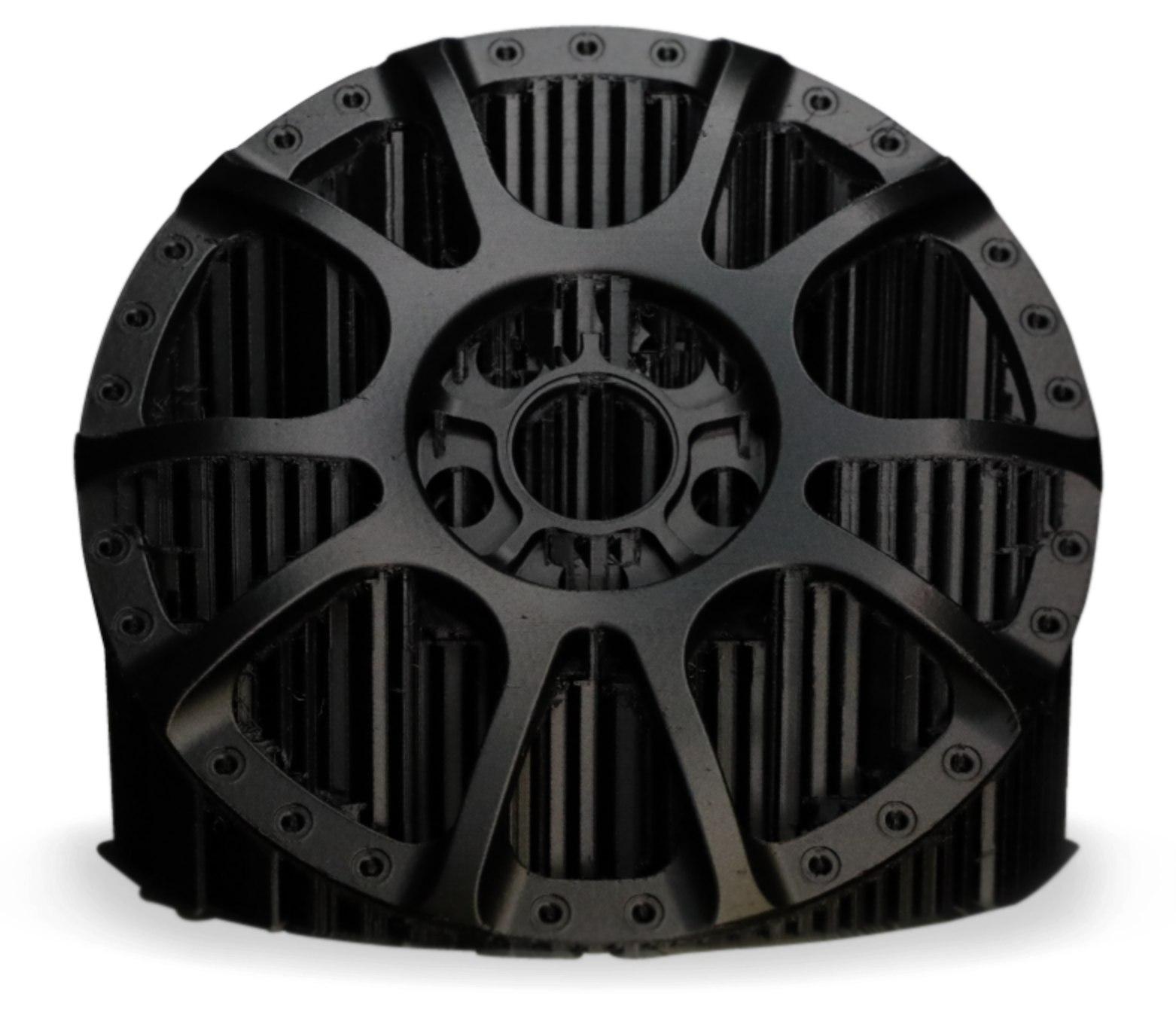



Functional
Prototypes
End-Use
Parts
Excellent
Surface Quality
High
Thermal
Resistance
Durable and
Lightweight



Strong and durable, carbon fiber reinforced filament
with high stiffness and high thermal resistance. Ideal for application areas that require strength and lightness together, such as aerospace. Also, it is suitable for end-use parts, functional prototypes and low volume production.

Mechanical Properties
Physical Properties
What is FFF
(Fused Filament Fabrication)?
Fused Filament Fabrication (FFF) is a 3D printing technology widely known for its speed, accuracy and competitive cost.
In FFF technology, the printing process is performed by laying the thermoplastic materials in filament form layer by layer on top of each other. It is possible to produce products that combine strength and lightness with DYNAMIDE ® filament series, which consists of carbon fiber and fiberglass reinforced polyamide materials specially produced by Teknodizayn.
Advanced
Mechanical Properties
Reduction in
Bacteria Formation
The solution for robust,
lightweight and
cost-effective prototypes


Advantages of
FFF 3D Printing
Durable and
Lightweight


Carbon Fiber
Reinforced Polyamide

Strong and durable, carbon fiber
reinforced filament with high stiffness
and high thermal resistance. Ideal for
application areas that require strength
and lightness together, such as
aerospace. Also, it is suitable for
end-use parts, functional prototypes
and low volume production.
Strong and durable fiberglass reinforced
filament with medium thermal resistance.
Ideal for end-use parts functional prototypes
and low volume production.
Glass Fiber
Reinforced Polyamide

Mechanical Properties
Physical Properties
What is FFF?
(Fused Filament Fabrication)
Technical
Specifications
Fused Filament Fabrication (FFF) is
a 3D printing technology widely known for
its speed, accuracy and competitive cost.
In FFF technology, the printing process
is performed by laying the thermoplastic
materials in filament form layer by layer on
top of each other. It is possible to produce
products that combine strength and lightness
with DYNAMIDE ® filament series,
which consists of carbon fiber and
fiberglass reinforced polyamide materials
specially produced by Teknodizayn.
Surface Treatment
Vapor Smoothing
Fused Filament
Fabrication
The solution for robust,
lightweight and
cost-effective prototypes

Functional
Prototypes
End-Use
Parts
Excellent
Surface Quality
High
Thermal
Resistance
Advanced
Mechanical Properties
Sealing Against
Liquid & Gas
Reduction in
Bacteria Formation
The process is not limited to the visible
surface only it also polishes the complex
interior spaces of polymer parts.








